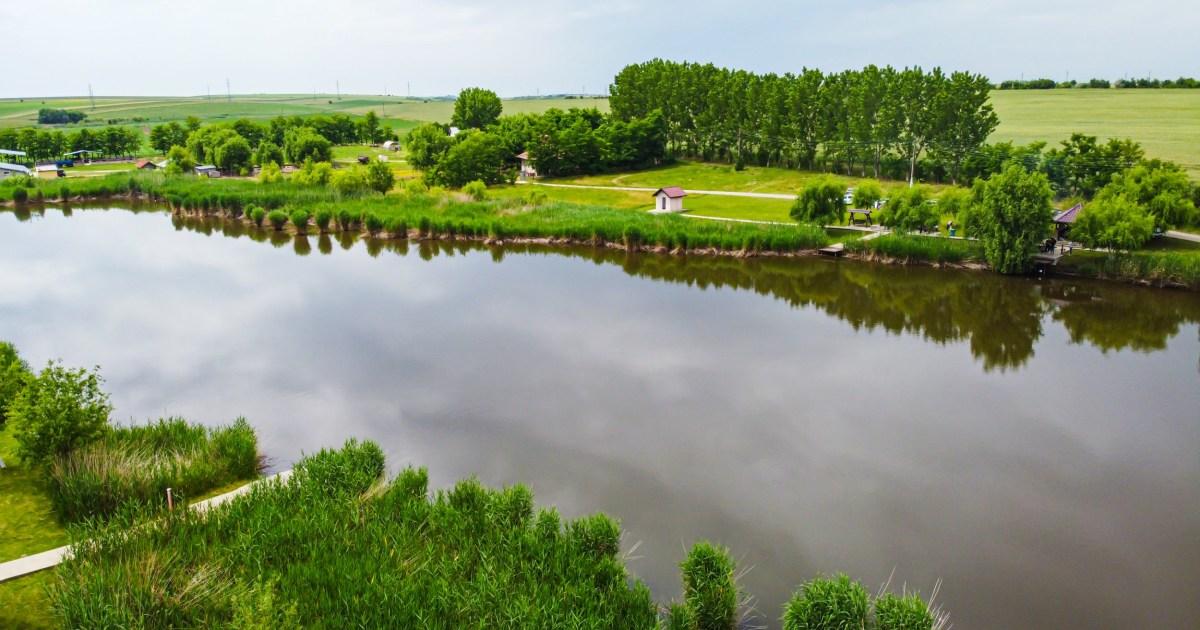
Protests and tourist taxes are changing the travel landscape across Europe, as several popular holiday destinations push back against visitors.
Last summer, anti-tourism demonstrations swept Barcelona and the Balearic Islands, while Venice and Amsterdam increased tourist charges.
Today, British holidaymakers are preparing for mass protests on the Canary Islands.
Thousands of disgruntled locals are set to take to the streets on Sunday afternoon to fight mass tourism under the slogan: ‘Canary Islands has a limit.’
But Europe still has plenty of quiet corners, if you know where to look.
One such place is Teleorman, a remote and underexplored part of southern Romania that has just been named the least visited place on the continent.
Sign up to The Getaway newsletter
Fuel your wanderlust with our curated newsletter of travel deals, guides and inspiration. Sign up here.

The region, which borders Bulgaria, recorded just 20 overnight stays per 1,000 residents in 2023, according to a new study by Which?.
That’s compared to Zante, a Greek island of 40,000 residents, which clocked six million overnight stays the same year — or 150 for every resident.
In Teleorman, essentially, you’ve about as much chance of winning £50 on the lottery as bumping into another tourist.
The nod comes as Romanians vote in a pivotal presidential run-off that could radically alter their country’s position in Europe.
The election, which has been described as a head-to-head between pro-western and anti-western Romania, pits a Trump-allied ultra-nationalist against a centrist independent.
Experts have called it the most important vote in the country’s post-communist history.

Things to do in Teleorman
It doesn’t have the beautiful buildings or swish cafes of Romania’s capital Bucharest, but what Teleorman lacks in urban sophistication, it makes up for in history and natural beauty.
Teleorman county is one of Romania’s poorest areas. The roads are lined with wild poppies and the absence of commercialisation endears it to travellers looking to escape tourist traps.
Alexandria, the region’s capital, is a small but charming city of cathedrals, museums, and a 5,000-seat football stadium.
Its rivers are an excellent place to try your hand at fishing, surrounded by valleys and verdant fields.
Teleorman roughly translates to ‘wild forest’, and there are plenty of green spaces to reflect that. The Vedea Forest Park, for example, is a great destination for hikers.
In the southern part of the region, the Danube Valley gives way to ponds and tributaries that flow into the mighty Danube River, creating a spectacular vista.
This part of the world has weathered many wars and Communist rule, a chequered past that’s reflected in historical landmarks such as the Saint Ioan Valahul Monastery, a ruined structure on the outskirts of Poiana village.

The monastery was recently restored, and a young monk now hosts tours that take you through the site’s cultural significance.
Teleorman is home to the Holy Apostles Peter and Paul Church, famous for its four towers – two big and two small – that form the shape of a cross.
Built between 1902 and 1904, it was last restored in the 1930s with the help of the local community.
Steeped in unassuming solitude, this place is worlds away from the chaos of Europe’s busiest destinations.
The destinations least plagued by overtourism, according to Which?
Teleorman, Romania (21.54 tourists per 1,000 residents)
Dytikos Tomeas Athinon, Greece (64.13)
Călăraşi, Romania (123.97)
Olt, Romania (148.3)
Severoistočen, North Macedonia (177.84)
Podunavska oblast, Serbia (277.83)
Arr. Soignies, Belgium (284.11)
Targovishte, Bulgaria (332.15)
Rybnicki, Poland (351.1)
Benevento, Italy (398.17).
If you prefer a city break but can’t cope with the chaos of Paris or Madrid, a 90-minute drive from Teleorman is Bucharest.
Romania’s capital has long been described as the ‘Paris of the East’ for its lavish architecture and tree-lined boulevards.
During the 19th and 20th centuries, Bucharest was a hotspot for French artists and intellectuals, who frequented the city. At the time, society mirrored the Parisian way, with a focus on fashion, elegance and sophistication. Likewise, prominent Romanian artists, including Constantin Brâncuși, studied in Bucharest before making their names in Paris.
Recently ranked 9th in The Times’ roundup of ’24 of the best affordable city breaks in Europe’, the city is also actively welcoming tourists.
The Romanian government is pouring money into accommodation and public transport in a bid to attract travellers, while other countries are pushing them away.
Romania’s best hidden gem
Metro‘s Alice Murphy travelled across Romania in 2023 and fell head over heels for Brasov.
A train ride from Bucharest in the heart of Transylvania, she says you’ll find a perfect blend of traditional charm and modern city life. Brasov’s Old Town, which is protected by Unesco, is quainter than its counterpart in the capital.
Embroidered with medieval buildings, including the Gothic Black Church and the Council House, the city is home to Rope Street, the narrowest street in Romania.
The Bucharest to Brasov train takes around 2 hours and 30 minutes, with prices ranging between £5 to £14.
Best time to visit Romania
In summer, the mercury in Romania hovers around 35°C. The hottest August on record topped a sweltering 44.5°C.
With that in mind, the best time of year to visit is generally considered to be May into early June, or September into early October, when the average daily temperature rests at 25°C.
If you want to avoid the cold, January is a no-go, with lows of -4°C.
How to get to Romania
From London, Ryanair and Wizz Air run direct routes to Bucharest from London Stansted and Luton.
According to Google Flights, return flights in October are now available from £62.
To get to Teleorman, the best option is to fly to Bucharest and drive the final leg, which takes about an hour and a half. Public transport is limited in this part of Romania, and there is no train.
The destinations most plagued by overtourism, according to Which?
Zakynthos (Zante), Ionian Islands, Greece (149,886.95 tourists per 1,000 residents)
Istria County, Croatia (133,466.93)
Fuerteventura, Canary Islands, Spain (118,720.31)
Lanzarote, Canary Islands, Spain (117,785.17)
Dodecanese Islands, Greece (113,790.45)
Tiroler Oberland, Austria (112,716.37)
Pinzgau-Pongau, Austria (109,009.7)
Cyclade Islands, Greece (104,152.63)
Kerkyra (Corfu), Greece (100,079.59)
Außerfern, Austria (97,299.12).
Do you have a story to share?
Get in touch by emailing MetroLifestyleTeam@Metro.co.uk.
MORE: Everything I ate in a weekend of pintxos hopping in San Sebastián
MORE: ‘Lively’ European city named world’s most walkable and flights are just £66
MORE: This UK beach is ‘more relaxing than the Algarve’ — two hours from London








